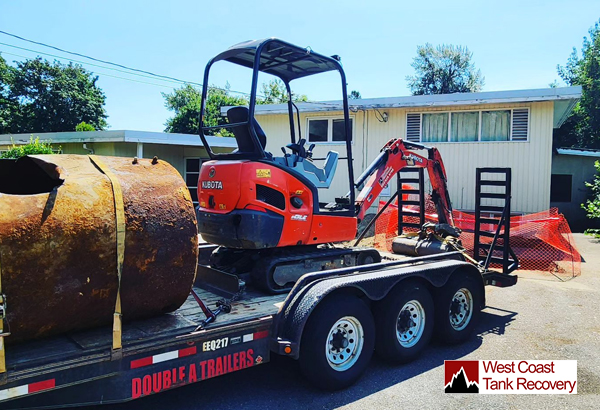 Fully Licensed and Insured
Fully Licensed and Insured Request an Oil Tank Scan
Request an Oil Tank Scan Request a Free Estimate
Request a Free Estimate

In the realm of property ownership, the landscape is evolving, and with it, the technologies that safeguard our homes. One such groundbreaking technology that has become indispensable in the quest for property safety is Ground Penetrating Radar (GPR) scanning. At West Coast Tank Recovery, we believe in leveraging the power of a GPR scan to unveil hidden oil tanks—an essential step for homeowners in Vancouver and beyond.
GPR scanning is a non-invasive geophysical method that employs electromagnetic radiation to penetrate various surfaces creating a subsurface image of the scanned area. This innovative technology offers property owners an efficient and accurate means of detecting buried oil tanks without disrupting the soil or environment. The process involves sending short pulses of electromagnetic energy into the ground and analyzing the signals bounced back. By interpreting these signals, our expert technicians can map out the subsurface by providing a real-time image of what lies beneath your property.
Abandoned oil tanks- though out of sight, should not be out of mind. The potential risks they pose to the environment, property structure, and the health of occupants are significant. Over time, eroding metal walls can lead to soil subsidence causing newly sunken areas on your property. Furthermore, the metal erosion can create holes in the tank allowing leftover oil and sludge to seep into the groundwater thereby leading to environmental contamination. In Vancouver, where environmental consciousness is high, the implications of leaving an oil tank underground can be severe, making GPR scans a crucial tool for property owners.
Before the advent of GPR scanning, property owners were compelled to resort to blind excavation or antiquated metal detection devices to locate buried oil tanks. Blind excavation involves digging without precise knowledge of what lies beneath, posing risks to unknown underground infrastructures like conduits or foundations. Antiquated metal detectors on the other hand, often provide vague readings and can register a wide variety of misleading debris. Both methods are time-consuming, costly, and disruptive, underscoring the need for a more advanced and accurate solution like GPR scanning.
Without a GPR scan, excavation becomes a guessing game prone to errors with potentially severe consequences. Accidentally damaging crucial underground structures during blind excavation can lead to costly repairs and disruptions. In Vancouver, where property values are high and the environmental impact is a significant consideration given the abundance of local ecosystems, blind excavation is an antiquated and unsuitable method for discovering hidden tanks.
GPR scanning’s ability to penetrate various surfaces including concrete, asphalt, soil, and rock, makes it a versatile tool for detecting and locating hidden objects underground. When it comes to oil tank detection, a GPR scan provides an accurate and real-time image of the subsurface, allowing homeowners to identify the position, size, and shape of buried oil tanks with precision. In a city that values both its natural surroundings and property integrity, GPR scanning is the key to property safety.
At West Coast Tank Recovery, we are committed to bringing this technology to your service, ensuring that your property remains a haven of safety and security. Discover the hidden risks, unveil the mysteries beneath your feet, and embrace the future with a GPR scan—an investment in property safety that transcends time.